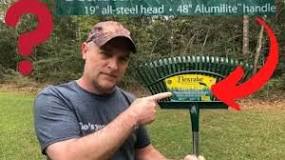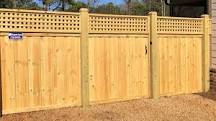Absolutely, you should seed after power raking! Power raking, or dethatching, is a great way to remove thatch buildup from your lawn, making it healthier and more vibrant. But if you stop there, you might miss out on a golden opportunity to boost your lawn’s growth. Seeding after power raking can help fill in bare spots and encourage new growth, giving you that lush green lawn you’ve been dreaming of.
Why Power Rake First?
Before diving into seeding, let’s chat about why power raking is important.
Removes Thatch
Thatch is that pesky layer of dead grass and organic matter that can suffocate your lawn. By power raking, you’re clearing this out, allowing air, water, and nutrients to reach the soil.
Prepares the Soil
Power raking also loosens up the soil surface. This is crucial because it creates a better environment for seeds to germinate and establish roots. Think of it as giving your seeds a cozy bed to grow in!
Timing Is Everything
Now that we know why power raking is essential, let’s talk timing.
Best Season to Seed
The best time to seed after power raking is during the growing season—typically in spring or early fall. This gives your new seeds the best chance to germinate and thrive.
Weather Considerations
Make sure the weather is cooperating too! You want to seed when temperatures are mild and there’s a good chance of rain. Too hot or too cold can hinder seed germination.
Choosing the Right Seed
Not all seeds are created equal!
Grass Type Matters
Choose a grass type that suits your climate and lawn conditions. For instance, cool-season grasses like Kentucky bluegrass thrive in northern climates, while warm-season grasses like Bermuda are perfect for southern areas.
Seed Quality
Invest in high-quality seeds. They may cost a bit more upfront but will pay off with a healthier lawn in the long run.
Care After Seeding
Once you’ve seeded, don’t forget about care!
Watering
Keep the soil consistently moist but not soggy. Light watering several times a day can help those seeds germinate faster.
Fertilizing
Consider using a starter fertilizer to give your new grass an extra boost. Just make sure to follow the instructions on the package!
Summary
So, should you seed after power raking? The answer is a resounding yes! Power raking clears out thatch and prepares your lawn for new growth, making it an ideal time to seed. Just remember to choose the right season, select quality seeds, and care for them properly afterward.
FAQ
How soon after power raking can I seed?
You can seed immediately after power raking. Just make sure the soil is loose and ready for those seeds to settle in!
What if it rains right after I seed?
A little rain is usually a good thing! It helps with germination. Just keep an eye on it—too much rain can wash away your seeds.
Can I use my regular lawn care routine after seeding?
Hold off on your usual lawn care routine for a bit. Let the new grass establish itself before applying weed killers or heavy fertilizers.
Is there anything else I should do after seeding?
Yes! Keep an eye on moisture levels and avoid heavy foot traffic on your newly seeded areas until they’re well-established.







